Features
The Odyssey and Living Legacy of sieur de La Nérolle
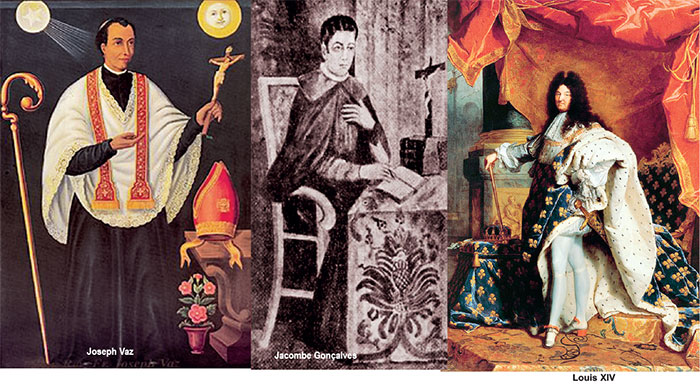
By Uditha Devapriya
Review of Yasmin Rajapakse’s The Odyssey and Living Legacy of sieur de La Nérolle: The French Lieutenant of the Expedition Escadre de Perse to Ceylon in 1672.
Neptune Publications,
98 pages, Rs. 2,000.
Europe’s imperial forays into the East were shaped by a long line of events, dating back to the Reconquista of 1492. These events sealed the fate of one part of the world: limited until then to occasional encounters with the West, Africa and Asia eventually turned into colonial outposts. That, in turn, had a profound impact on the course of politics in Europe; rocked by economic changes and religious tensions, it became a hotbed of conflict.
These developments did not escape Sri Lanka. Conquered by succeeding waves of South Indian dynasties, the country had its first taste of European colonialism in the mid-16th century. With its logic of exploitation and proselytisation, Portuguese rule lasted for more than half a century. Its inception coincided with the inception of the Kandyan kingdom, its collapse with the onset of the Dutch-Portuguese War. Taking advantage of these shifts and developments, Kandyan rulers sought Dutch support to overthrow the Portuguese. The ruse worked, though not entirely to the satisfaction of the Kandyans.
In November 1656, Dutch forces forced Rajasinghe II away from Colombo, contrary to the terms of an agreement that had pledged to cede the capital to Kandy. With the surrender of Portuguese forces in Jaffna on June 24, 1658, the Dutch established their rule in the country. We are told that five months later, on November 20, officials passed a resolution praising God for helping them evict their foes. Paul E. Pieris observes that while these celebrations were taking place, “[a] Jesuit was beheaded and 11 others were hanged, their bodies being left to rot on the gibbets.” These were obviously spoils of war.
 One of the most idiosyncratic of the Sinhalese kings, Rajasinghe II was arguably the most tempestuous. We are told that he acted “like a caged tiger.” One day he would vent his fury against the Dutch, and the very next he would tell them that he appreciated their services. Anxious to secure his goodwill, the Hollanders for their part humoured him by sending him gifts, missives, entreaties, and ambassadors. At the peak of his reign, Paul E. Pieris notes, he had collected a large and perfect menagerie of foreigners and diplomats; perhaps the most well known of these was Robert Knox, taken prisoner in 1660.
One of the most idiosyncratic of the Sinhalese kings, Rajasinghe II was arguably the most tempestuous. We are told that he acted “like a caged tiger.” One day he would vent his fury against the Dutch, and the very next he would tell them that he appreciated their services. Anxious to secure his goodwill, the Hollanders for their part humoured him by sending him gifts, missives, entreaties, and ambassadors. At the peak of his reign, Paul E. Pieris notes, he had collected a large and perfect menagerie of foreigners and diplomats; perhaps the most well known of these was Robert Knox, taken prisoner in 1660.
Yasmin Rajapakse’s book is about one of these officials. At once lucid and accessible, it is rich in sources and packed with details. As she notes at the very beginning, though much has been written about the subject of her work, very little has been verified. What Rajapakse’s account attempts to do, then, is make sense of the man behind the legend, deconstructing one of the more intriguing periods in our history.
The subject of several apocryphal and anecdotal accounts, sieur de La Nérolle’s life has never been seriously examined until now. While a number of essays, articles, and even books have been written about him, none of them has attempted to place his story in the context of his times. This is what Yasmin Rajapakse tries to do in her book. Guided by her intense passion for French and Sri Lankan history, she traces de La Nérolle’s trysts with the island to certain political developments in 17th century Europe.
Rajapakse begins her account, understandably enough, with the land of La Nérolle’s birth. France in the 16th century, she notes, was different to the country it would later become. With an abundance of resources, officials did not feel the need to expand into other regions, especially in the East, as the Portuguese, Dutch, and British were doing. All that changed in the second half of the century, in particular after the establishment of the French East Indies Company. Hemmed in for so long by rival European powers, it realised that to contend with them, it had to go out and explore. To that end, under Louis XIV, the “Sun God”, the French STate began to build up a strong naval force, to pursue trade in the East Indies.
At the time France was witnessing not just economic change, but social upheaval. Religious tensions had become the order of the day, with schisms between Catholics and Protestants spilling over to the country’s political life. One of the more prominent officials of the French East Indies Company was François Caron, a Protestant-Huguenot refugee born in Flanders. Caron’s career resembles that of many petty officials who went on to hold high positions in the Orient: working as a kitchen assistant at the age of 19 in the Dutch East Indies Company, he mastered Japanese and became the President of the Company and Admiral of the Dutch Fleet. Falling out with the Company, he later switched allegiances to the French.
Caron’s first task was to establish trade in the East Indies. Louis XIV’s Minister of State, Jean-Baptiste Colbert, had envisioned a series of reforms that would help France stand on par with the rest of Europe. To this end, Caron’s proposal, that the French Navy go beyond the Pacific and into the Indian Ocean, was well received.
Having been involved in the Dutch capture of Negombo from the Portuguese in 1644, Caron soon realised that Ceylon figured in his scheme of things, and communicated as much with Colbert. In 1669 he despatched a letter to Rajasinghe II, informing him of France’s intention to “forge a lasting friendship” with his Court. A year later Colbert summoned a naval force, baptising it Escadre de Perse, or “Squadron of Persia”, and sailing from La Rochelle in March 1670 to the coast of Koddiyar, or Trincomalee, in March 1672.
All these details seem superfluous, but they are vital to Rajapakse’s narrative. We are told that Rajasinghe II received the first two diplomats sent by the French mission to Kandy well. We are told that he agreed with their proposal to counter the Dutch. Yet Dutch designs on the island and on Kandy being what they were, they could not prevail for long against their competitors. The upsurge of war between Holland and France in 1671 did not help resolve these confrontations, and in the end, barely a year after settling in the East of the island, the French fleet, or what was left of it, evacuated and abandoned Trincomalee.
Yasmin Rajapakse reflects on the reasons for these failures, noting not just the logistical problems that French soldiers had to face, but also the capability of the French fleet tasked with securing conveniences across the Indo-Pacific. This is where she gets to the subject of her study. Before setting sail back home, French officials despatched yet another mission to Kandy. The man chosen to head this mission, who would remain in Kandy despite his wishes and plans, was a young lieutenant attached to the fleet, the sieur de la Nérolle.
 Who were the de La Nérolles? Rajapakse traces them to a family of military officials from the village of Charante. Today, of course, there are many De Lanerolles in Sri Lanka, with a separate but related line bearing the name Lenora. In France the de La Nérolles faced the brunt of the country’s official religious policy, converting from the Protestantism of their youth to Catholicism after Louis XIV cut their privileges. This, no doubt, made Lieutenant de La Nérolle, stranded in Kandy, the sole Protestant or Huguenot from his family. As Rajapakse makes it clear in her account, that had a profound impact on his relations with not only the Sinhalese kings, but also the many foreign emissaries at the Kandyan court.
Who were the de La Nérolles? Rajapakse traces them to a family of military officials from the village of Charante. Today, of course, there are many De Lanerolles in Sri Lanka, with a separate but related line bearing the name Lenora. In France the de La Nérolles faced the brunt of the country’s official religious policy, converting from the Protestantism of their youth to Catholicism after Louis XIV cut their privileges. This, no doubt, made Lieutenant de La Nérolle, stranded in Kandy, the sole Protestant or Huguenot from his family. As Rajapakse makes it clear in her account, that had a profound impact on his relations with not only the Sinhalese kings, but also the many foreign emissaries at the Kandyan court.
The Kandyan kingdom of the 17th and 18th centuries, as countless historians have pointed out, was a flourishing cosmopolitan enclave. Open to a great many foreign influences, it occupied a world of its own. Sinhalese kings had made contacts with Catholic refugees, Protestant priests, Muslim traders, Hindu swamis, and European diplomats. Rajasinghe II’s fascination with the latter endeared him to Westerners.
These policies were maintained by his successors, two of which Sieur de La Nérolle served: Wimaladharmasuriya II and Vira Parakrama Narendrasinghe. De La Nérolle went on to endear himself so well to the Kandyan Court that, in 1723, he was not just permitted to marry a woman from a prominent noble family, but also conferred with the title of Mudiyanse.
A beneficiary of Kandyan largesse, de La Nérolle found himself enjoying a status few others did. Though there were obvious strategic motives to their decision to tolerate and reward foreign officials, the Sinhalese kings went out of their way to ensure that the Europeans in their realm were taken care of. Often they took them into their confidence, granting them access. For their part, European emissaries remained respectful of local customs, especially the King’s patronage of Buddhism. This did not, however, mean that they abandoned their way of life: writing of de La Nérolle, for instance, Rajapakse tells us very clearly and candidly that he “was known to be vehemently anti-catholic.”
It was the Frenchman’s rigid anti-Catholicism, in fact, which compelled him to denounce Joseph Vaz as a spy to Wimaladharmasuriya II. The latter at once ordered his men to seize the priest, yet upon realising that he was “a harmless Catholic ascetic”, he let him go. This by no means resolved tensions between the Huguenot and the Papist: Rajapakse relates a particularly lively debate between de La Nérolle and a later Catholic ascetic frequenting the Kandyan kingdom, Jacombe Gonçalves, played out in front of Narendrasinghe over matters of faith such as the relevance of saints and idols to the Church.
In what can be taken as a testament to the influence of the Portuguese Church in Sri Lanka, the avowedly Sinhalese Buddhist king sided with Gonçalves, convinced by his defence of the worship of idols. Though Rajapakse does not mention it, it is possible that the king’s own partiality to “idol-worshipping” made him favour the Catholic priest, a fact which may explain his patronage of not just Gonçalves, but also other priests. Gonçalves for his part conspired to convert de La Nérolle’s closest aide, Pedro Gascon of “Daskon” fame, a ruse that eventually succeeded. Meanwhile, having sided with the Catholic priest, the ever sharp and intrepid Narendrasinghe threatened to hand sieur de La Nérolle over to Catholic adversaries unless he “cease his rant” against their Church.
 All this changed with the advent of the Nayakkars. A Telugu dynasty from South India, the Nayakkars found themselves in the midst of a swirling mass of conspiracy at the Kandyan Court. Though commanding the loyalty of Sinhalese nobles and Buddhist priests, they had to prove their allegiance to Sinhalese culture and Buddhist practices. Unlike their predecessors, they had to be more public about their patronage of those practices. This obviously meant shedding off all foreign accretions, not just within their family, but also within the kingdom. Faced with the “atmosphere of uncertainly and insecurity” that followed this, the La Nérolle courtiers in Kandyan Court felt compelled to leave. With their exit, Rajapakse concludes, the family line shifted from the hill country to the Dutch-controlled South.
All this changed with the advent of the Nayakkars. A Telugu dynasty from South India, the Nayakkars found themselves in the midst of a swirling mass of conspiracy at the Kandyan Court. Though commanding the loyalty of Sinhalese nobles and Buddhist priests, they had to prove their allegiance to Sinhalese culture and Buddhist practices. Unlike their predecessors, they had to be more public about their patronage of those practices. This obviously meant shedding off all foreign accretions, not just within their family, but also within the kingdom. Faced with the “atmosphere of uncertainly and insecurity” that followed this, the La Nérolle courtiers in Kandyan Court felt compelled to leave. With their exit, Rajapakse concludes, the family line shifted from the hill country to the Dutch-controlled South.
The Odyssey and Living Legacy of sieur de La Nérolle is unabashedly a labour of love. Well researched and well sourced, it is replete with enough references to qualify it as a first-rate work. The only discernible error, on page nine, is a misdating of a letter sent by Caron to Rajasinghe II. What makes it stand out well in other respects is the author’s love for French culture and Sri Lankan history. A Francophone and, I daresay, Francophile, Yasmin Rajapakse first came to us onboard Bonsoir. Though not a professional historian, her account of sieur de La Nérolle puts her above many professionals in the country, whose abandonment of the most basic principles of scholarship is to be deeply regretted. At the end of it all, this is what distinguishes Rajapakse’s work, and what distinguishes her.
The writer can be reached at udakdev1@gmail.com
Features
The first Hantana Hatana

Peradeniya Student uprising of 1965 and beyond
(Based on an account of the events by Prof. T. Sivaparakasapillai)
A far-reaching achievement of the very last State Council of Ceylon (1942-47) of D. S. Senanayake, prior to independence, was its visionary education policy. Free education, from the kindergarten to university, was legislated in 1945, while the Ceylon University Ordinance was passed in 1942, under C. W. W. Kannangara’s watch as the Minister of Education. Twenty-two central schools teaching English were established. Many, including Ivor Jennings and DSS, had expressed some reservations, questioning if the nation could afford all this. The Trotskyite leader Dr. N. M. Perera is said to have even authored a book, calling to delay these policies until the arrival of the “worker’s revolution”. He argued that “reactionary forces entrenched in power” will use free education to brainwash children against the progressive and anti-colonial message of their movement.
In fact, it was the leaders of the left movement who were most successful in recruiting the youth of the country into their fold. The militant oratory and intellectual-prestige of the left leaders, the anti-imperialist spirit of the age, and the egalitarian thrust of socialism appealed to the naturally rebellious idealism of the young undergraduates of the Peradeniya University. It was a fragile garden of Eden set by the Hantana Hills and the Mahaweli river, ideal for scholarly contemplation. While the University of Ceylon officially “spawned” from its embryo – ‘The University College, Colombo” in 1942 – it was Peradeniya (1952) that marked its coming of age. Its first decade lived up to the dream of its founders, with famous scholars, such as Paranavitana, Malalalsekera, Hettiarachchi, and Kanapathypillai, on board, while Ludowyk, Sarathchandra and others blazed national cultural memes that have taken firm root in the country.
Meanwhile, leftist ideology moved from being a mere intellectual pursuit to becoming the work-book of Student Unions. Student leaders were not just concerned with mere student rights, but with the loftier stuff of “the international struggle of the oppressed”. While there had been several student strikes of a more modest nature, an early and significant political disturbance was disrupting Dudley Senanayake’s visit to the campus in 1962. The student protest of December 1965 was an altogether different, violent watershed event, involving the police as well. The 1965 student strike was “understood” by the student leaders as the first moments of a revolution, claiming that the harbour workers and the CTB were allegedly joining in! This event gave the then government the “justification” for appointing two civil servants as vice-chancellors and increasing its control over universities.
A valuable personal account of the 1965 student strike, written by Ananada Wanasinghe, an undergraduate student of that era, appeared in The Island recently [01]. It added to the campus reminiscences of Mr. Warakaulle, published earlier. Wanasinghe characterised the 1965 event as “The beginning of the end” of the dream of Peradeniya. He recounts how a minority, led by the student leader Shanmugaratnam of the “Maoist wing,” had ignored the opposition of the majority of students and launched the strike. He describes how the police were taunted and attacked by students, and how shots were fired, students tear-gassed, attacked and arrested, while various dons intervened with the police and the students. The writer states:
In the melee, I saw a tall man steadily walking towards the police truck. Pointing at me, he told the officer standing there – ‘You must release this man, otherwise it’s going to be difficult to control the students.’ I came to know later that he was Prof. Sivapragasapillai of the Faculty of Engineering. After some time, I was taken to the Kandy police station. Prof. Siva had followed us to the police station. He bailed me out and took me to hospital. Many students visited me in the hospital. Some of them wept.
Interestingly, there is an account of this watershed event written out at the time by Professor T. Sivaparakasapillai himself. Prof. Siva, a product of the University College, Colombo, was a government scholar at Imperial College, London, in the 1930s. He joined the University of Ceylon, Colombo, in 1950, then moved to Peradeniya and back at the University of Colombo to retire in 1975. His contributions to Sri Lanka’s academic life are too many for us to recount here. As Prof. Siva’s account of the first “Battle of Hantana” is hardly known to the public, we present most of it here.
Saturday, 11th
December 1965.
I was at the Faculty of Engineering at 11 a.m., when Dr. Ariyapala, Wilson and others came looking for Prof. Chinnappa, President, University Teacher’s Association (UTA). They said there was a big clash between the police and the students, and wanted to take officials of the UTA to settle the trouble. We could not find Prof. Chinnappa, nor could we contact Prof. Wickremanayake, Proctor. So we set out in three cars, – mine with Mr. Karunaratne, Dr. Bartlette with Professor Bartholomeusz and Dr. Arumugam, and Dr. Ariyapala’s with some others’.
When we reached Galaha Road, we were informed that the road was blocked and we could not proceed further. We saw other cars turning back and going towards the roundabout. I managed to park my car in the Faculty of Medicine and I saw a policeman bleeding from head to foot, and being carried into the ambulance. Then I walked towards Wijewardena Hall and saw a number of policemen retreating with wicker-shields, followed by an angry mob of students. Both parties were hurling stones at each other, and stones were being pelted at the police also from the balcony of Wijewardena Hall . I told the police to withdraw further, and tried to stop the students chasing the police. … I was able to stop more students proceeding further than the railway bridge. Then they agreed to go back with me to the campus, provided I got the other batches of police out of the campus. These policemen, with an ASP, were at the Shirley de Alwis roundabout. The police wanted me to make the students clear the roadblock and withdraw to their halls. The students wanted their President released before they withdrew. The police would not release an arrested person without taking him to the police station and allow him to be bailed out. I assured the students that I would go with the police and bring their President back. I got a message (from the student President) read out by two students asking the others to get back to their halls and restore order. The ASP was very cooperative but a young sub-inspector, or sergeant, was very rude and upsetting every arrangement that I made with the ASP. He even told me that the senior officer was from the University and not from the police. I told this to the ASP who confirmed that he was from the police, and I checked up that his badges were definitely police.
These two students, after reading the President’s message, were clearing the road blocks when the first lot of policemen, who had withdrawn earlier, returned, firing shots and throwing tear gas into the halls. They assaulted the two students who were clearing the blockade at the request of the ASP. Somehow, we prevented serious injuries and started discussions again. The students were saying, “you want us to go into the halls while the police are filling the halls with tear gas”. The police were saying that they would not stop attacking the students unless I could produce sergeant Seneviratne. I told them that I had seen a policeman being put in an ambulance and said that this might have been the missing Sergeant, but the police insisted that I check up from every hall and assure them that the students were not keeping a policeman inside.
At this stage another lecturer (Peter Silva), in national dress, joined me and we went towards the halls. I saw Professor Bartholomeusz and Dr. Arumugam near Wijewardena Hall, and we all checked up with the students and reported to the police that there was no policeman (held) in any of the halls. Then the police agreed to take me and two other students with the President in a police jeep. We cleared the road block at the level crossing gate and picked up a policeman hiding in the post office and reached Kandy Police Station at about 1:15 p.m. The Inspector recorded the President’s statement and I went with another Inspector and the President to the J. M. O. The J. M. O. advised us to go to the O. P. D and get the wound, an open cut about 1.5 ins long on the head, dressed. He also had swelling at the back of the right shoulder.
At the police station I bailed out the President and went in Dr. Thambiahpillai’s car. From there we went in my car to all the men’s halls and advised the students to remain calm and restore order as one policeman was very seriously injured and about 72 students, including about 25 girls, were injured and in hospital. After that I took the President to Kandy and handed him over to the M. S. around 5 p.m.
This account poignantly brings out the mayhem, turmoil and life-threatening injuries that happen when student leaders “launch a strike” – a rite of passage required of every leader to establish their credentials. In the early 1970s, when Mahinda Rajapaksa visited the Vidyodaya campus as a newly elected rookie MP, the JVP students physically attacked him. Mervyn de Silva, who was with him took up the brunt of the attack, allowing Mahinda R to be whisked out in Prof. Epasinghe’s jeep. The loci of the JVP uprising of 1971 were in University campuses, with the Vidyodaya campus subsequently closed and used as a detention camp. The evident nexus between violent student politics and violent national politics has been the object of various academic studies [2,3,4].
Ragging of freshers is part of the violence and condoned by the student leaders. A decade later, an even more serious Hantane Satana [5] took place in September1976, when serious ragging evolved into student riots; a female student died, and the VC was taken hostage leading to violent police action. Shortly after, I was at a dinner party far away, in the home of Sri Lanka’s then Ambassador to France, viz., Ediriweera Sarathchandra, in Neuilly, Paris. Young Chandrika Bandaranaike, then a strong Marxist, was also at the dinner, and she held that the CIA was instigating all this! The fallout from this incident probably influenced the 1977 elections, where Mrs. Bandaranaike lost power.
The Inter-University Federation (IUF) was launched in 1978. Its main organisational goals, upheld even today (e.g., by Wasantha Mudalige), insist on its foremost commitment to “unconditionally standing up for the rights of the people”, showing that the IUF is effectively an extra-parliamentary political organisation bootstrapping on educational institutions.
[1]
Ananda Wanasinghe (2024); https://island.lk/dream-that-was-peradeniya-the-beginning-of-the-end/
[2]
Dulanjana (2024); https://muragala.lk/wp-content/uploads/2024/06/Student-Politics-in-Sri-Lanka_Sachinda-Dulanjana.pdf
[3]
Weeramunda, A.J. (2008); Report of the research study on “The Socio Political Impact of Student Violence and Indiscipline in Universities and Tertiary Education Institutes.” National Education Commission Sri Lanka, Study Series No. 5 (2007/8).
[4]
Kalugalgedara and Kaushalya (2017); https://www.cepa.lk/wp-content/uploads/2017/11/CEPA_2017_University-Education- Literature-Review_english-20180403052417.pdf
[5]
Rangan (1976); https://www.nytimes.com/1976/12/15/archives/leadership-in-sri-lanka-shaken-by-outbreak-of-student-protests.html
By Pratab Sivaparakasapillai and
Chandre Dharmawardana
Features
Cricket enthusiasts…

Yes, I’ve got some interesting news for cricket enthusiasts.
The Colombo Cricket Club, in Melbourne, Australia, will be touring Sri Lanka, over the Easter season, and will be playing four games, and they wanted me to highlight this scene in my column.
The Over 40s Master’s side will be seen in action at the CCC grounds on Sunday, 20th April, at the Moors Sports Club grounds on 21st April, the SSC on the 23rd April, and at the PUSA grounds, Millaniya, on 27th April.
The team will be captain by Jerome Ephraums, co-founder of the Melbourne Colombo Cricket Club, and comprises Marlon von Hagt, Gary Gunasekera, Dirk De Silva, Leon Lewis, Pradeep Heenkende, Sri Kanagasbapathy, Keith Barthelot, Joshua Ephraums, Preshitt Ganegoda, Russell Gilder, Krishan David, Rahim Dole and Dario Dassanayake.
The Club celebrated 35 years recently, with over 350 guests attending the function.
Features
Minds and Memories picturing 65 years of Sri Lankan Politics and Society
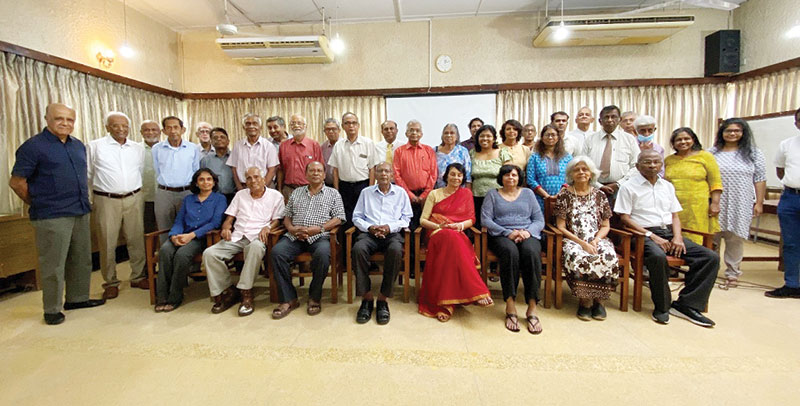
Last week I made mention of a gathering in Colombo to remember Kumar David, who passed away last October, as Comrade, Professor and Friend. The event was held on Saturday, April 5th, a day of double significance, first as the anniversary of the JVP insurrection on 5th April 1971, and now the occasion of the official welcome extended to visiting Indian Prime Narendra Modi by the still new JVP-NPP government. The venue was the Ecumenical Institute for Study and Dialogue (EISD) on Havelock Road, which has long been a forum for dialogues and discussions of topics ranging from religious ecumenism, Liberation Theology and Marxist politics. Those who gathered to remember Kumar were also drawn from many overlapping social, academic, professional and political circles that intersected Kumar’s life and work at multiple points. Temporally and collectively, the gathering spanned over six decades in the evolution of post-independence Sri Lanka – its politics, society and the economy.
Several spoke and recalled memories, and their contributions covered from what many of us have experienced as Sri Lankans from the early 1960s to the first two and a half decades of the 21st century. The task of moderating the discussion fell to Prof. Vijaya Kumar, Emeritus Professor of Chemistry at Peradeniya, who was a longtime friend of Kumar David at the university and a political comrade in the LSSP – especially in the Party’s educational and publication activities.
Vijaya Kumar recalled Kumar David’s contributions not only to Marxist politics but also to the popularization of Science that became a feature in several of KD’s weekly contributions to the Sunday Island and the Colombo Telegraph. Marshal Fernando, former and longtime Director of the EISD welcomed the participants and spoke of Kumar David’s many interactions with the Institute and his unflinching offer of support and advice to its activities. EISD’s current Director, Fr. Jayanath Panditharatne and his staff were extremely helpful.
Rohini David, Kumar’s wife of over 50 years, flew in specially for the occasion from Los Angeles and spoke glowingly of Kumar’s personal life as a husband and a father, and of his generosity for causes that he was committed to, not only political, but also, and more importantly, educational. An interesting nugget revealed by Rohini is the little known fact that Kumar David was actually baptized twice – possibly as a Roman Catholic on his father’s side, and as an Anglican on his mother’s side. Yet he grew to see an altogether different light in all of his adult life. Kumar’s father was Magistrate BGS David, and his maternal grandfather was a District Judge, James Joseph.
Kumar had an early introduction to politics as a result of his exposure to some of the political preparations for the Great Hartal of 1953. Kumar was 12 years old then, and the conduit was his step-father, Lloyd de Silva an LSSPer who was close to the Party’s frontline leaders. From a very young age, Kumar became familiar with all the leaders and intellectuals of the LSSP. Lloyd was known for his sharp wit and cutting polemics. One of my favourite lines is his characterization of Bala Tampoe as a “Lone Ranger in the Mass Movement.” Lloyd’s polemics may have rubbed on Kumar’s impressionable mind, but the more enduring effect came from Lloyd’s good collection of Marxist books that Kumar self-admittedly devoured as much as he could as a teenager and an undergraduate.
Electric Power and Politics
Early accounts of Kumar’s public persona came from Chris Ratnayake, Prof. Sivasegaram and Dr. K. Vigneswaran, all Kumar’s contemporaries at the Engineering Faculty that was then located in Colombo. From their university days in the early 1960s, until now, they have witnessed, been a part of and made their own contributions to politics and society in Sri Lanka. Chris, a former CEB and World Bank Electrical Engineer, was part of the Trotskyite LSSP nucleus in the Engineering Faculty, along with Bernard Wijedoru, Kumar David, Sivaguru Ganesan, MWW Dharmawardana, Wickramabahu Karunaratne and Chris Rodrigo. Of that group only Chris and MWW are alive now.
Chris gave an accurate outline of their political involvement as students, Kumar’s academic brilliance and his later roles as a Lecturer and Director of the CEB under the United Front Government. Chris also described Kumar’s later academic interest and professional expertise in the unbundling of power systems and opening them to the market. Even though he was a Marxist, or may be because of it, Kumar had a good understanding of the operation of the market forces in the electricity sector.
Chris also dealt at length on Sri Lanka’s divergent economic trajectories before and after 1977, and the current aftermath of the recent economic crisis. As someone who has worked with the World Bank in 81 countries and has had the experience of IMF bailout programs, Chris had both warning and advice in light of Sri Lanka’s current situation. No country, he said, has embarked on an economic growth trajectory by following standard IMF prescriptions, and he pointed out that countries like the Asian Tigers have prospered not by following the IMF programs but by charting their own pathways.
Prof. S. Sivasegaram and Dr. K. Vigneswaran graduated in 1964, one year after Kumar David, with first classes in Mechanical Engineering and Civil Engineering, respectively. Sivasegaram joined the academia like Kumar David, while Vigneswaran joined the Irrigation Department but was later drawn into the vortex of Tamil politics where he has been a voice of reason and a source for constructive alternatives. As Engineering students, they were both Federal Party supporters and were not aligned with Kumar’s left politics.
It was later at London Imperial College, Sivasegaram said, he got interested in Marxism and he credited Kumar as one of the people who introduced him to Marxism and to anti-Vietnam protests. But Kumar could not persuade Sivasegaram to be a Trotskyite. Sivasegaram has been a Maoist in politics and apart from his Engineering, he is also an accomplished poet in Tamil. Vigneswaran recalled Kumar’s political involvement as a Marxist in support of the right of self-determination of the Tamils and his accessibility to Tamil groups who were looking for support from the political left.
K. Ramathas and Lal Chandranath were students of Kumar David at Peradeniya, and both went on to become established professionals in the IT sector. Ramathas passionately recalled Kumar’s effectiveness as a teacher and described his personal debt of gratitude for helping him to get a lasting understanding of the concept and application of power system stability. This understanding has helped him deal with other systems, said Ramathas, even as he bemoaned the lack of understanding of system stability among young Engineers and their failure to properly explain and address recurrent power failures in Sri Lanka.
Left Politics without Power
The transition from Engineering to politics in the discussion was seamlessly handled by veterans of left politics, viz., Siritunga Jayasuriya, Piyal Rajakaruna and Dishan Dharmasena, and by Prof. Nirmal Dewasiri of the History Department at the University of Colombo. Siritunga, Piyal and Dishan spoke to the personal, intellectual and organizational aspects of Kumar David in the development of left politics after Kumar David, Vasudeva Nanayakkara and Bahu were no longer associated with the LSSP. Dewasiri reflected on the role of the intellectuals in left political parties and the lost to the left movement as a whole arising from the resignation or expulsion of intellectuals from left political organizations.
While Kumar David’s academic and professional pre-occupation was electric power, pursuing power for the sake of power was not the essence of his politics. That has been the case with Bahu and Sivasegaram as well. They naturally had a teaching or educational role in politics, but they shared another dimension that is universally common to Left politics. Leszek Kolakowski, the Polish Marxist who later became the most celebrated Marxist renegade, has opined that insofar as leftists are generally ahead of their times in advocating fundamental social change and promoting ideas that do not resonate with much of the population, they are unlikely to win power through electoral means.
Yet opposition politics predicated on exposing and decrying everything that is wrong with the system and projecting to change the system is fundamentally the most moral position that one can take in politics. So much so it is worth pursuing even without the prospect of power, as Hector Abhayavardhana wrote in his obituaries for LSSP leaders like NM Perera and Colvin R de Silva. By that token, the coalition politics of the 1960s could be seen as privileging a shared parliamentary path to power while dismissing as doctrinaire the insistence on a sole revolutionary path to power.
The two perspectives clashed head on and splintered the LSSP at its historic 1964 Conference. Kumar David and Lal Wijenayake were the youngest members at that conference, and the political genesis of Kumar David and others at the Engineering faculty that Chris Ratnayake outlined was essentially post-coalition politics. In later years, Vasudeva Nanayakkara, Bahu and Kumar David set about creating a left-opposition (Vama) tendency within the LSSP.
This was considered a superior alternative to breaking away from the Party that had been the experience of 1964. Kumar David may have instinctively appreciated the primacy of the overall system stability even if individual components were getting to be unstable! But their internal efforts were stalled, and they were systematically expelled from the Party one by one. Kumar David recounted these developments in the obituary he wrote for Bahu.
As I wrote last week, after 1977 and with the presidential system in place, the hitherto left political parties and organizations generally allied themselves with one or the other of the three main political alliances led by the SLFP, the SLPP and even the UNP. A cluster of them gravitated to the NPP that has been set up by the JVP under the leadership of Anura Kumara Dissanayake. Kumar David supported the new JVP/NPP initiative and was optimistic about its prospects. He wrote positively about them in his weekly columns in the Sunday Island and the Colombo Telegraph.
The Social Circles of Politics
Sometime in late 2006, Rohan Edrisinha introduced Kumar and me to Rajpal Abeynayake, who was then the Editor of the Sunday Observer, for the purpose of writing weekly columns for the Paper. Bahu was already writing for the Sunday Observer and for almost an year, Bahu, Kumar and I were Sunday Island columnists, courtesy of Rajpal Abeynayake. In 2007, Prof. Vijaya Kumar introduced us to Manik de Silva, already the doyen of Sri Lanka’s English medium editors, and Kumar and I started writing for the Sunday Island edited by Manik. It has been non-stop weekly writing a full 18 years. For a number of years, we have also been publishing modified versions of our articles in the Colombo Telegraph, the online journal edited by the inimitable Uvindu Kurukulasuriya.
Writing mainstream rekindled old friendships and created new ones. It was gratifying to see many of them show up at the celebration of life for Kumar. That included Rajpal Abeynayake, Bunchy Rahuman, Gamini Kulatunga, Ranjith Galappatti, Tissa Jayatilaka, NG (Tanky) Wickremeratne, and Manik de Silva. Vijaya Chandrasoma, who unfortunately could not attend the meeting, was particularly supportive of the event along with Tanky and Ramathas. Tissa and Manik spoke at the event and shared their memories of Kumar.
Dr. Santhushya Fernando of the Colombo Medical Faculty provided organizational support and created two superb video montages of Kumar’s life in pictures to background theme songs by Nat King Cole and Frank Sinatra. Manoj Rathnayake produced a Video Recording of the event.
In a quirky coincidence, five of those who attended the event, viz. Manik de Silva, Vijaya Kumar, Chris Ratnayake, S. Sivasegaram and K. Vigneswaran were all classmates at Royal College. On a personal note, I have been associated with every one of them in one way or another. Chris and I were also Engineers at the Hantana Housing Development in the early 1980s, for which the late Suren Wickremesinghe and his wife Tanya were the Architects. And Suren was in the same Royal College class as the other five mentioned here.
In the last article he wrote before his passing, Kumar David congratulated Anura Kumara Dissanayake for his magnificent political achievement and expressed cautious optimism for the prospects under an NPP government. Many in the new government followed Kumar David’s articles and opinions and were keen to participate in the celebration of life that was organized for him. That was not going to be possible anyway with the visit of Prime Minister Modi falling on the same day. Even so, Prof. Sunil Servi, Minister of Buddha Sasana, and Religious and Cultural Affairs, was graciously present at the event and expressed his appreciation of Kumar David’s contributions to Sri Lankan politics and society.
by Rajan Philips
-
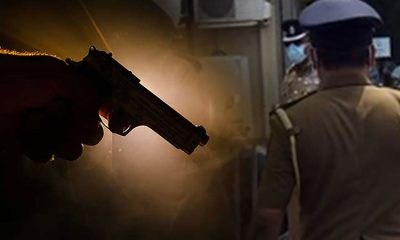
 News5 days ago
News5 days agoSuspect injured in police shooting hospitalised
-

 Features6 days ago
Features6 days agoRobbers and Wreckers
-
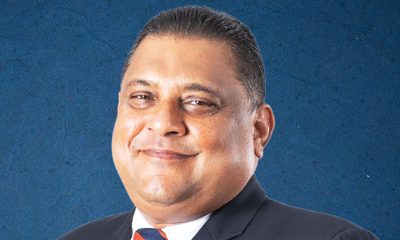
 Business6 days ago
Business6 days agoBhathiya Bulumulla – The Man I Knew
-
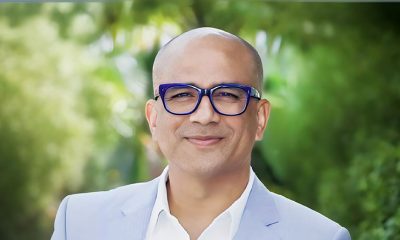
 Business5 days ago
Business5 days agoSanjiv Hulugalle appointed CEO and General Manager of Cinnamon Life at City of Dreams Sri Lanka
-
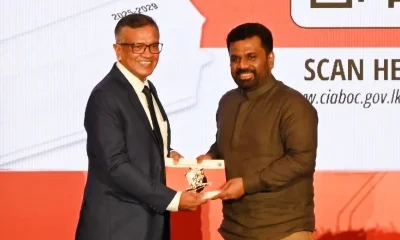
 Business7 days ago
Business7 days agoNational Anti-Corruption Action Plan launched with focus on economic recovery
-

 Features4 days ago
Features4 days agoLiberation Day tariffs chaos could cause permanent damage to US economy, amid global tensions
-
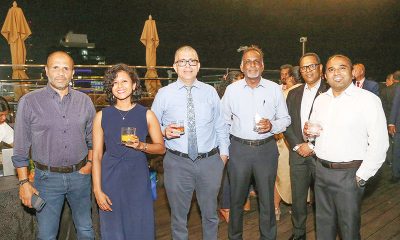
 Business4 days ago
Business4 days agoMembers’ Night of the Sri Lanka – Russia Business Council of The Ceylon Chamber of Commerce
-
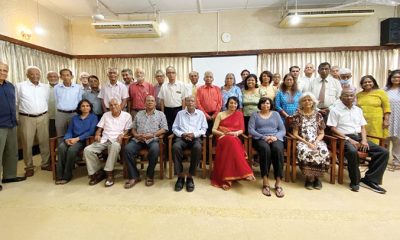
 Features4 days ago
Features4 days agoMinds and Memories picturing 65 years of Sri Lankan Politics and Society











